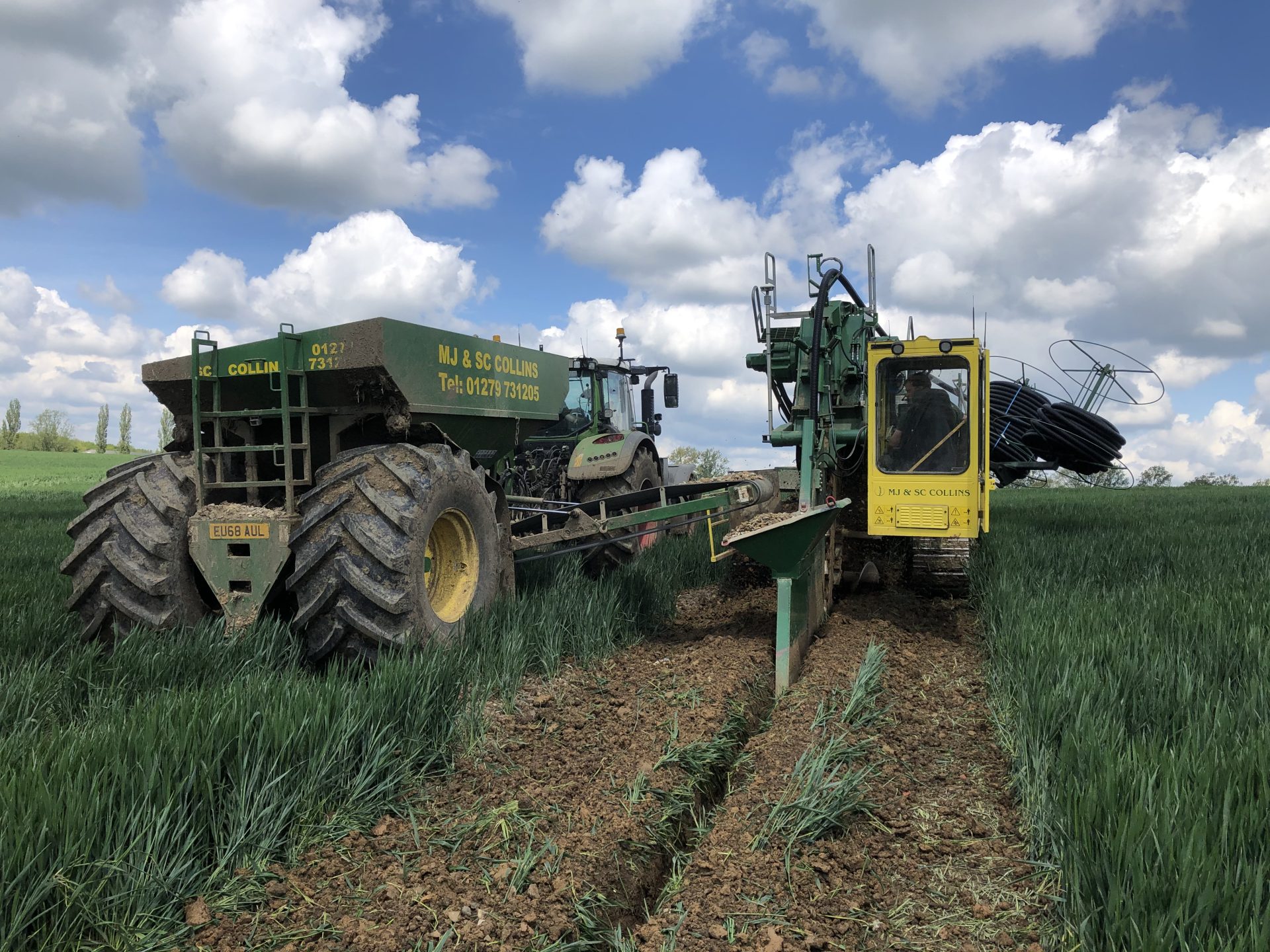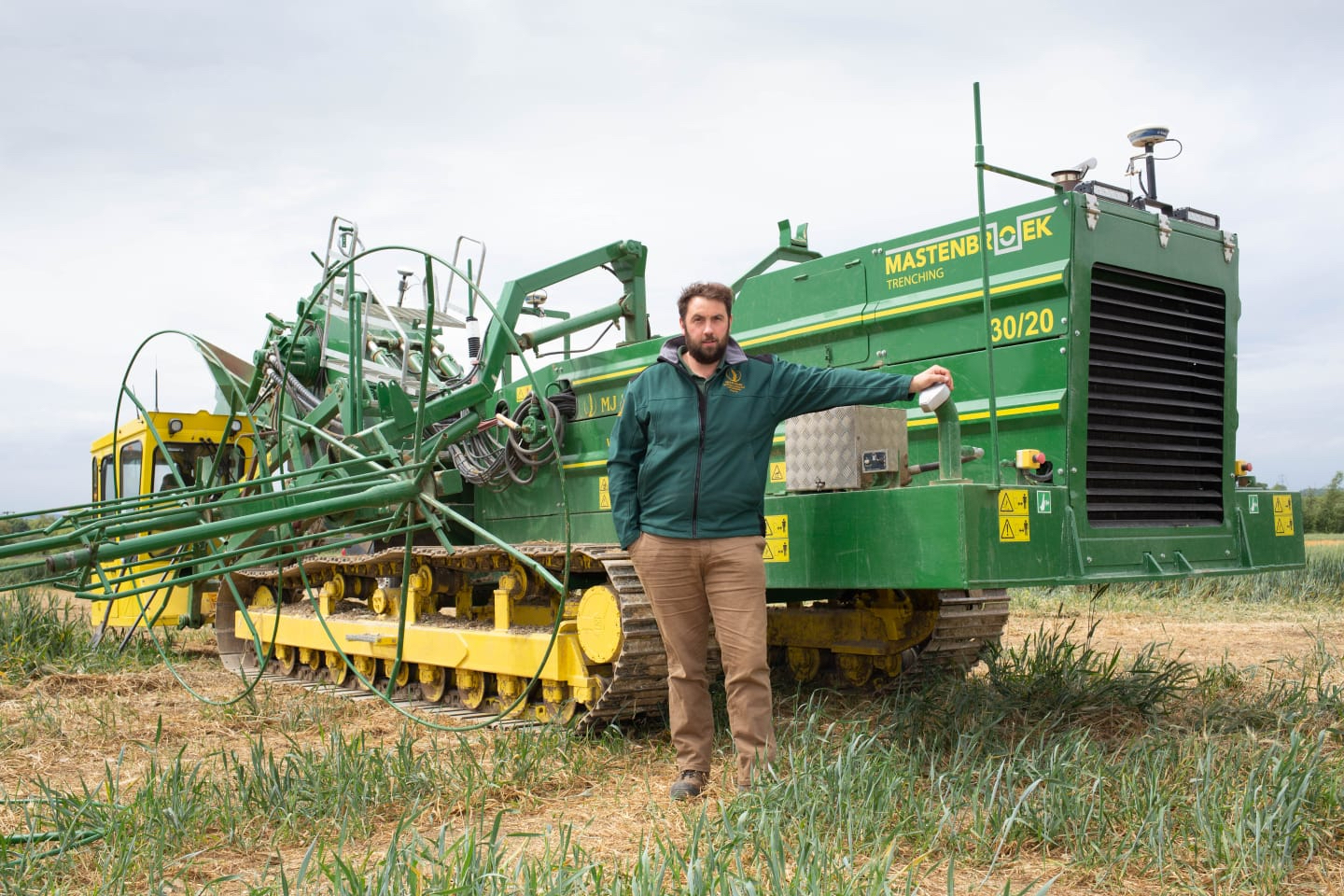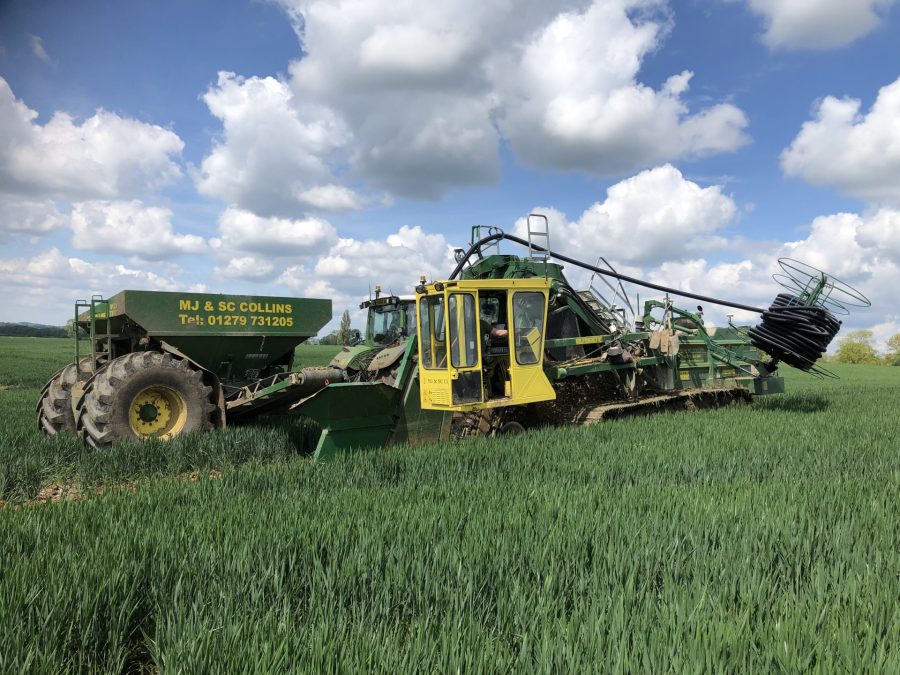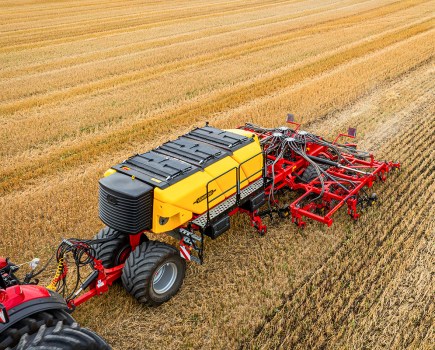As well as improving soil structure and reducing inputs, MJ & SC Collins has found that a drainage plan can reduce blackgrass by as much as 70%.
Operating from Kingstons farm, Matching near Harlow, Essex, MJ & SC Collins farms more than 1,215ha (3,000 acres) of wheat, barley, winter and spring beans and sugar beet across East Hertfordshire and West Essex.
As well as the streamlined cropping plan, another factor that has played a major role in the family business’ growth is a proactive drainage plan developed over the past six years with Mastenbroek and Trimble.
The most significant benefit of land drainage is the reduction in blackgrass and the farm has gone from blanket spraying herbicide to targeting small areas and following up with hand rouging in the summer.

Delivered in November 2018, the farm’s 30/20 self-propelled Mastenbroek trencher covers around 3,000m a day.
“We are probably saving around £15,000 a year on wheat herbicides alone,” calculates farm manager John Haynes of MJ & SC Collins. “I would say, depending on dormancy in a specific year, we have reduced blackgrass on our recently drained fields by 70%.”
Other benefits include a significant increase in the number of earthworms and a healthier soil. “Drainage is key to unlocking the full potential of what can be achieved through reduced cultivation, compost and sewage sludge application. I describe it as a Christmas Tree in terms of the shape and magnitude of each level. So, the base – the widest branches – is the drainage followed by soil structure, organic matter, cultivation, nitrogen use and input reduction.”

It depends on dormancy in a specific year, but farm manager John Haynes of MJ & SC Collins reckons blackgrass levels are down by 70% on recently drained fields.
John cannot precisely quantify the benefit of improved nitrogen use efficiency to his yields, but he is adamant that applying nitrogen early is critical for both encouraging tillering and growth as well as ensuring the urea they use as nitrogen gets into the crop early. He estimates that unless it is a very dry winter, he gets onto the drained fields a week to 10 days earlier.
Part of the reason for the earlier access is the improved soil structure following the drainage. “The fields we have drained dry out much quicker than the older schemes, and when moling is up to date, the soil structure is so much more resilient. We can cultivate sooner in the spring but, crucially, later into the autumn. The soil is more friable and requires less intense cultivation.”






